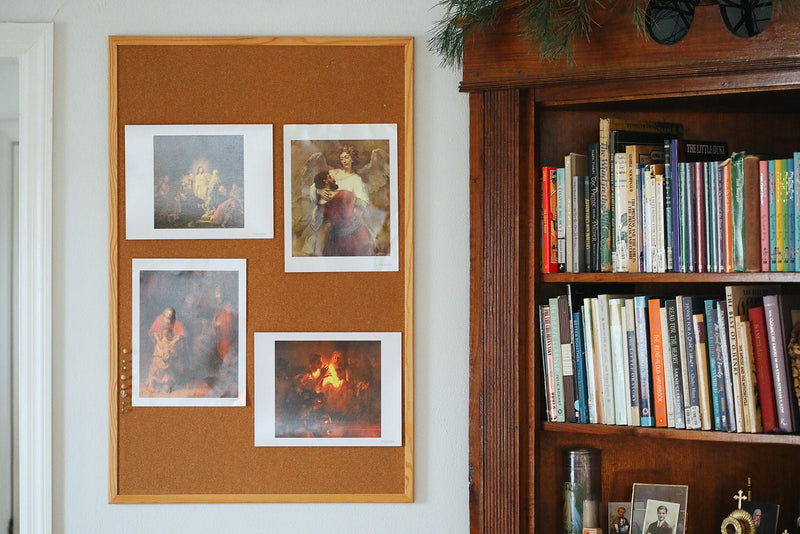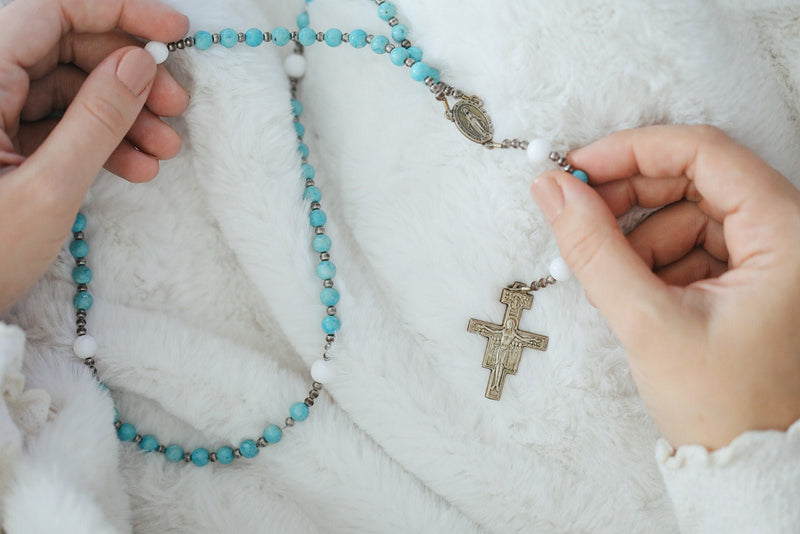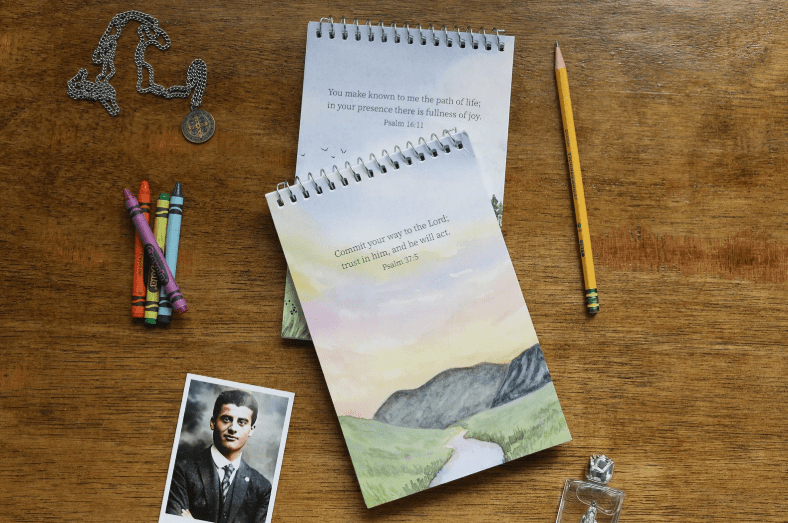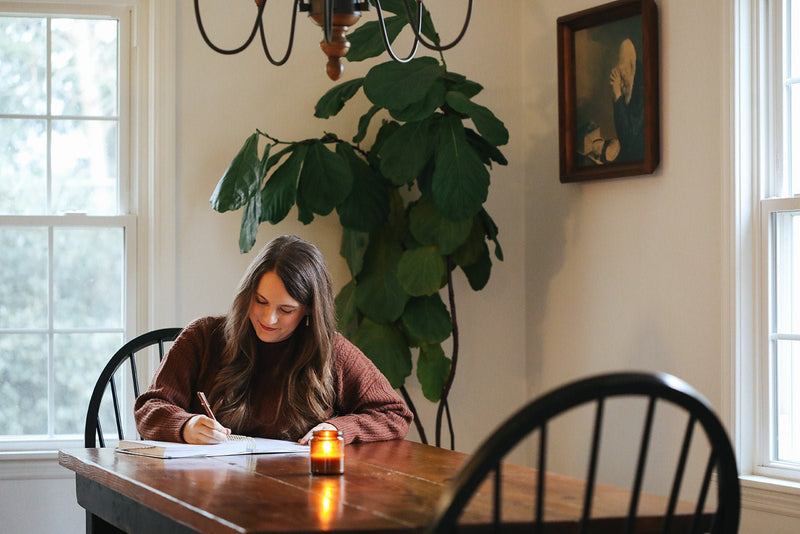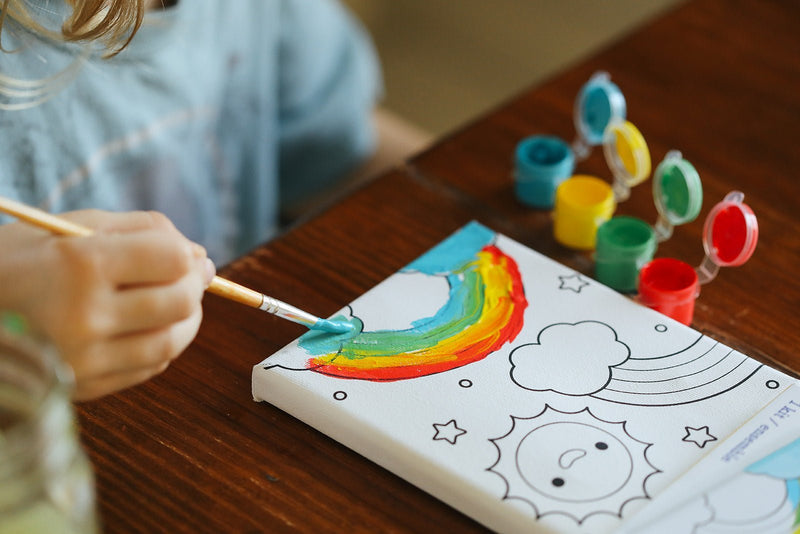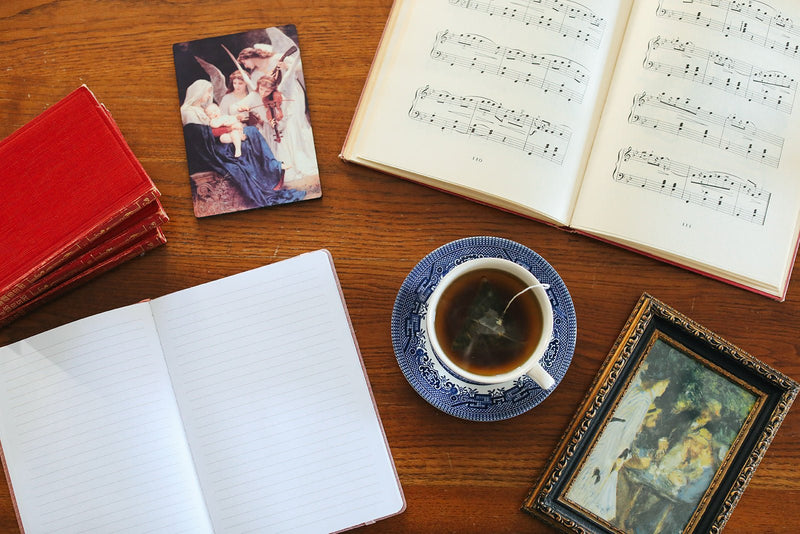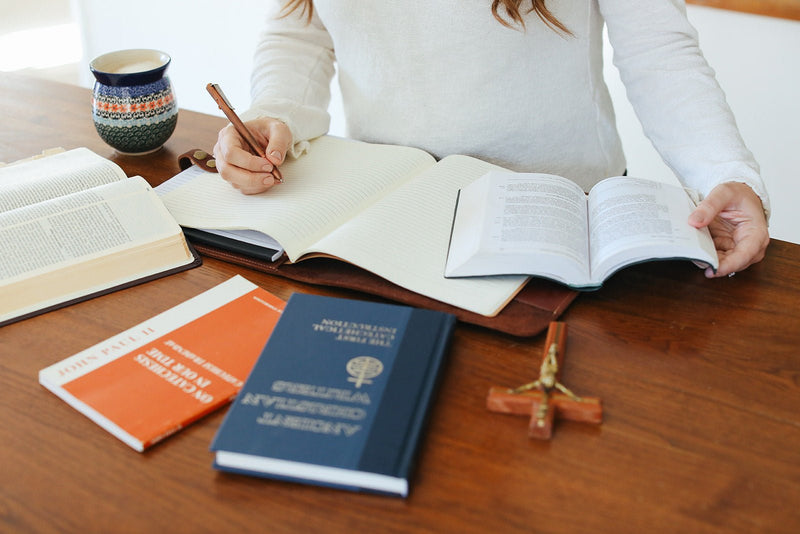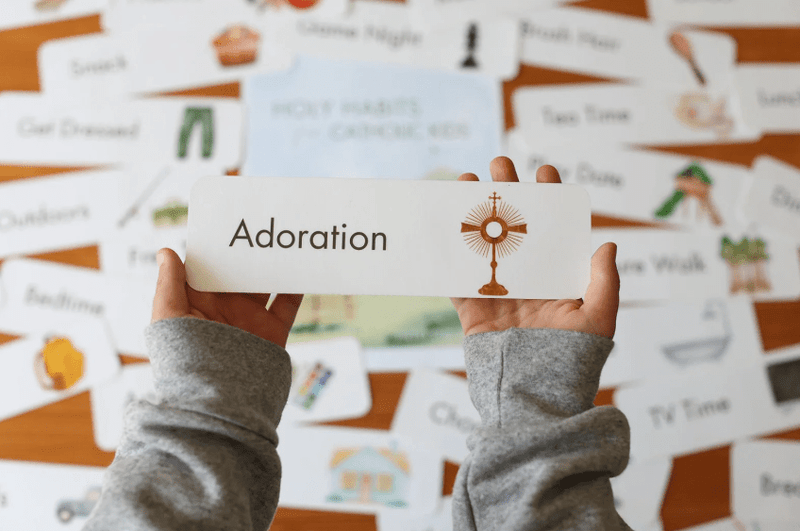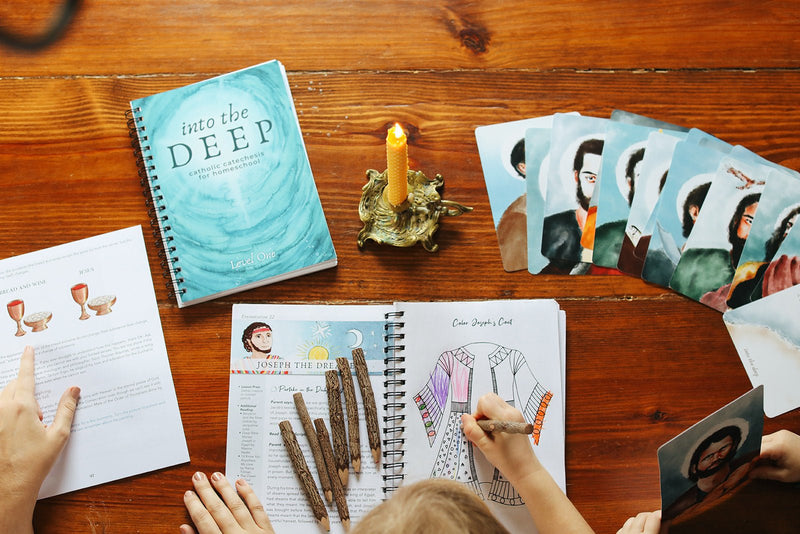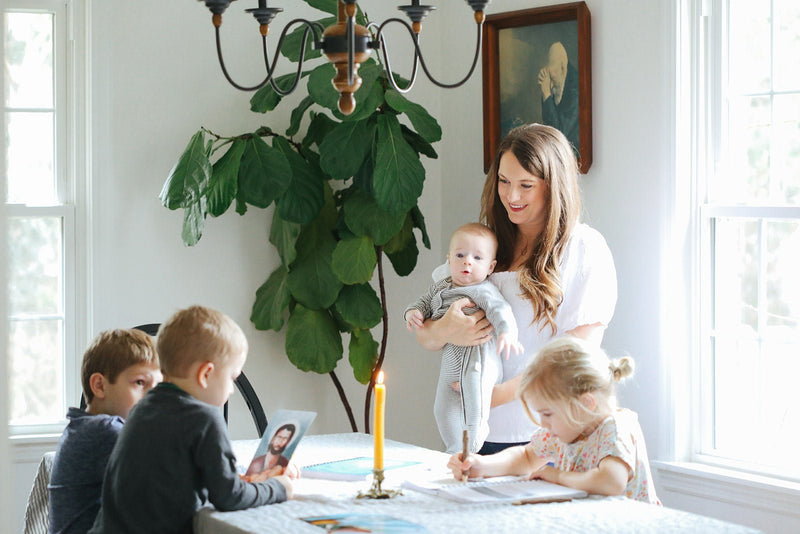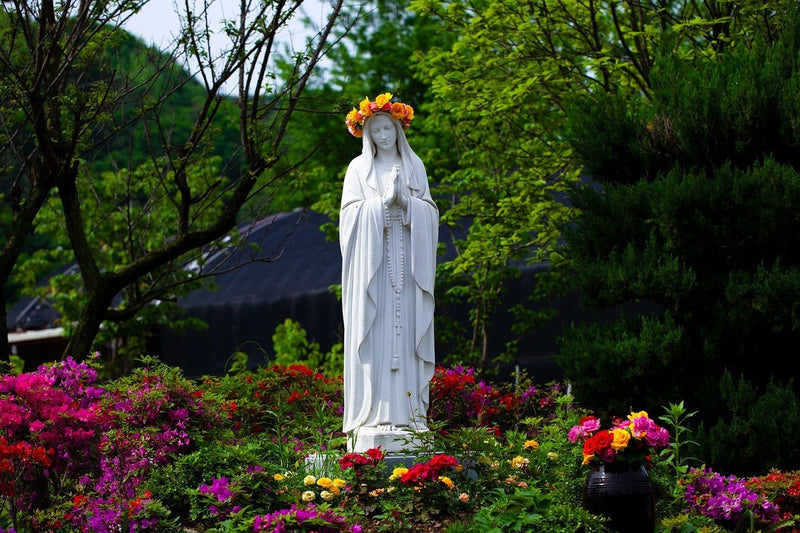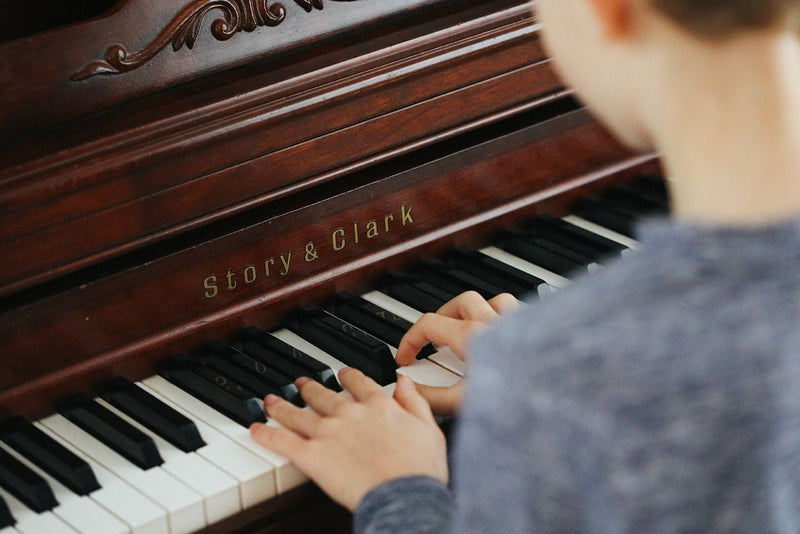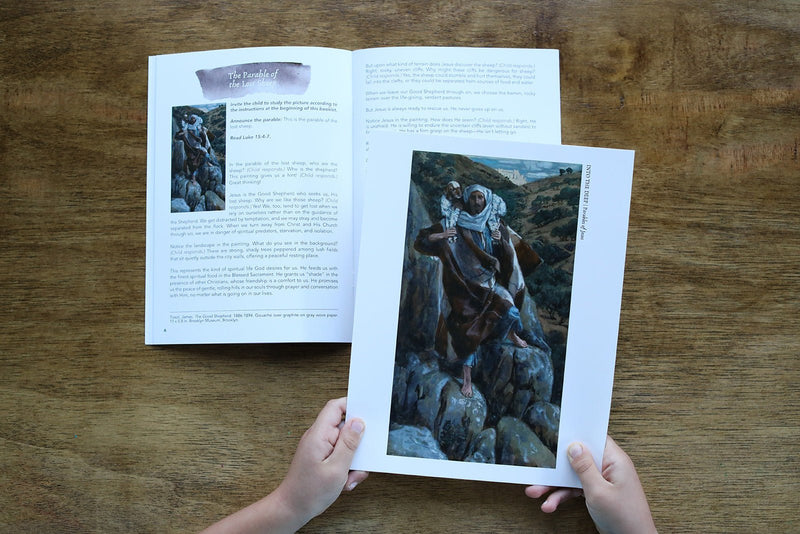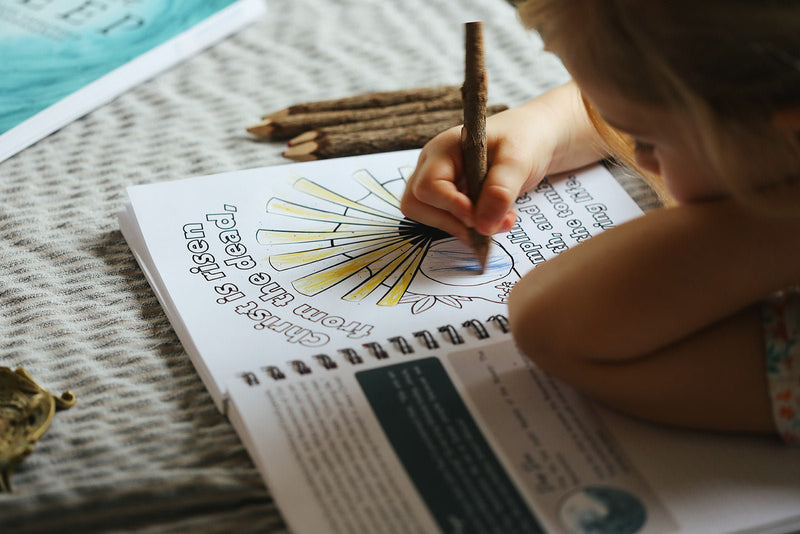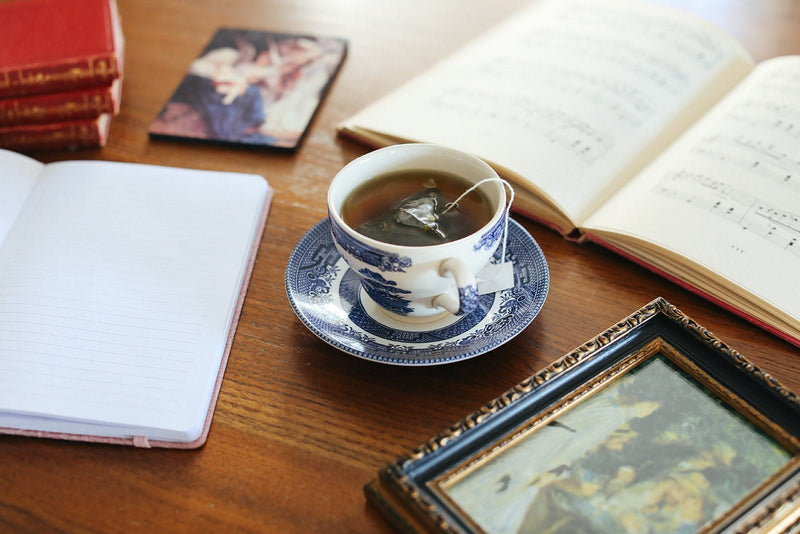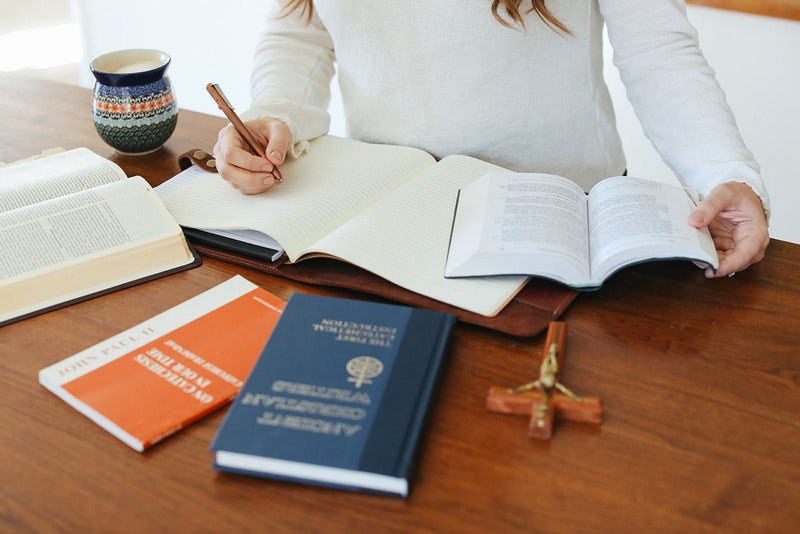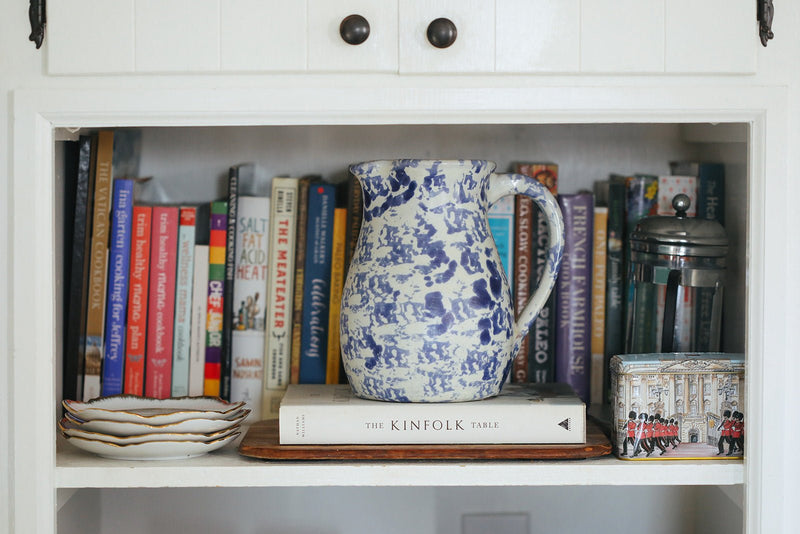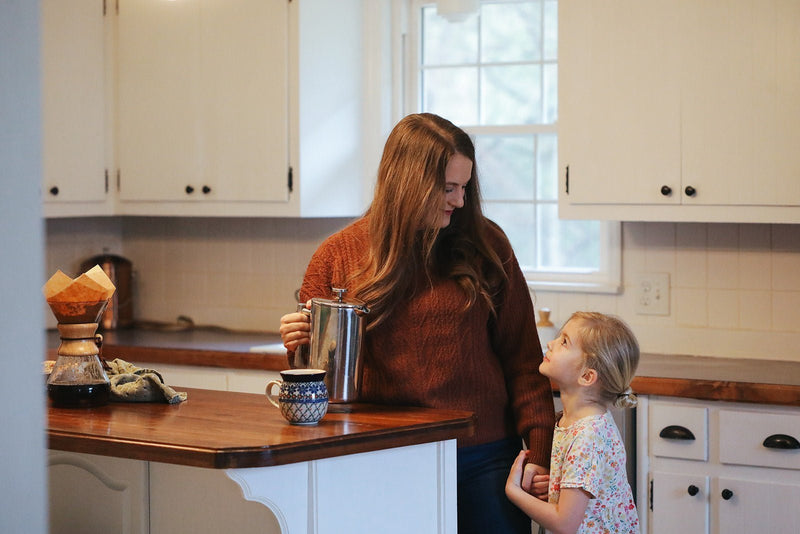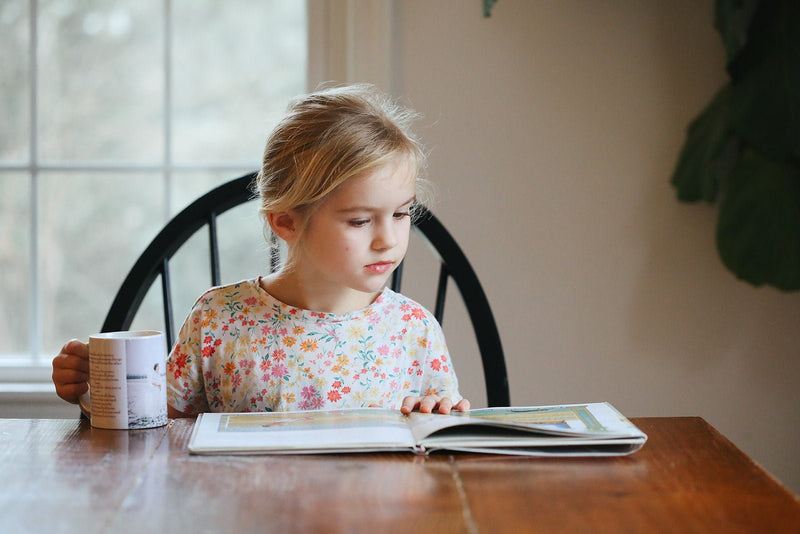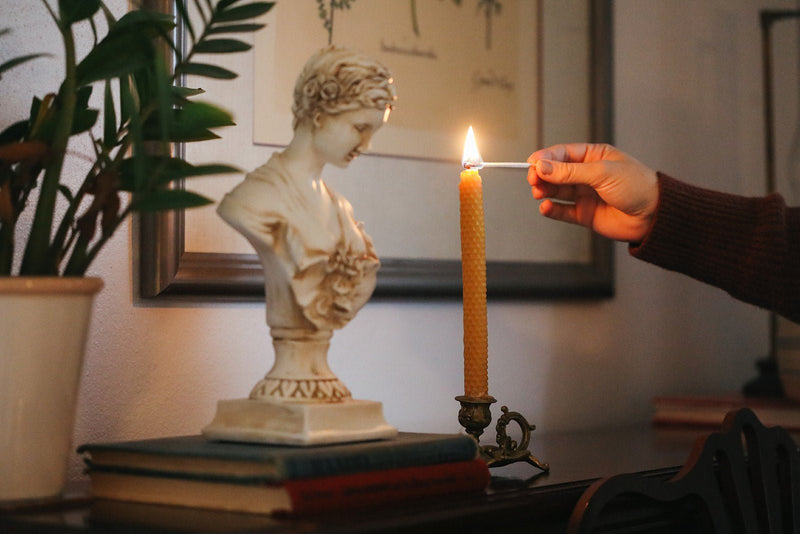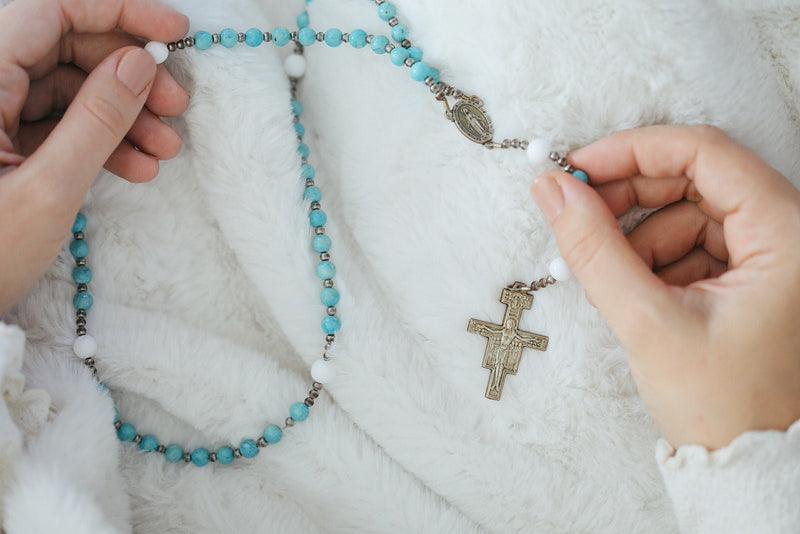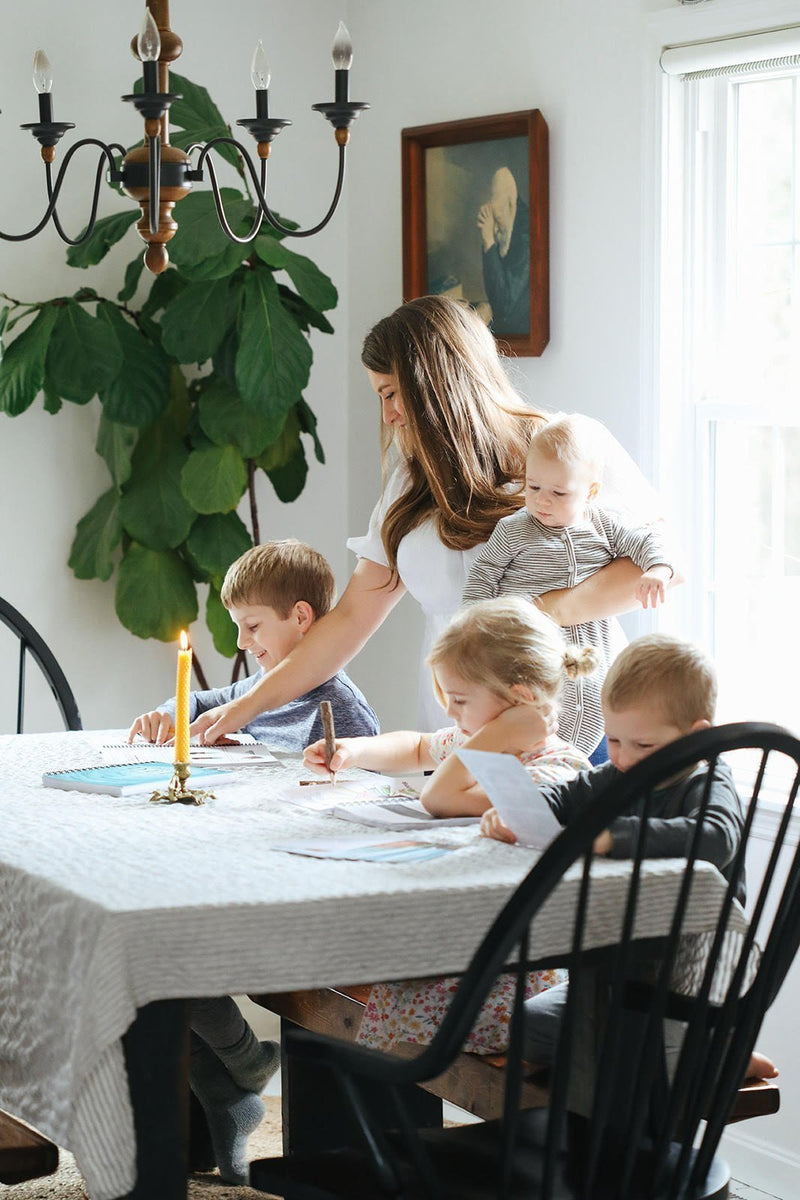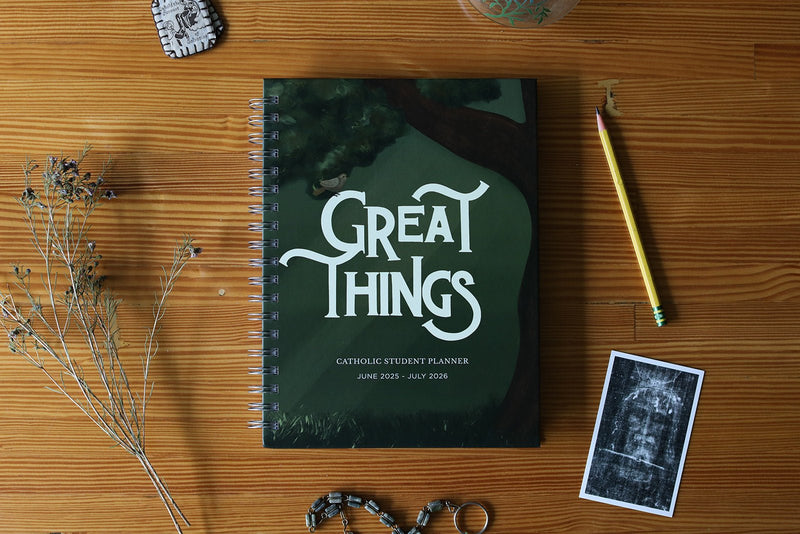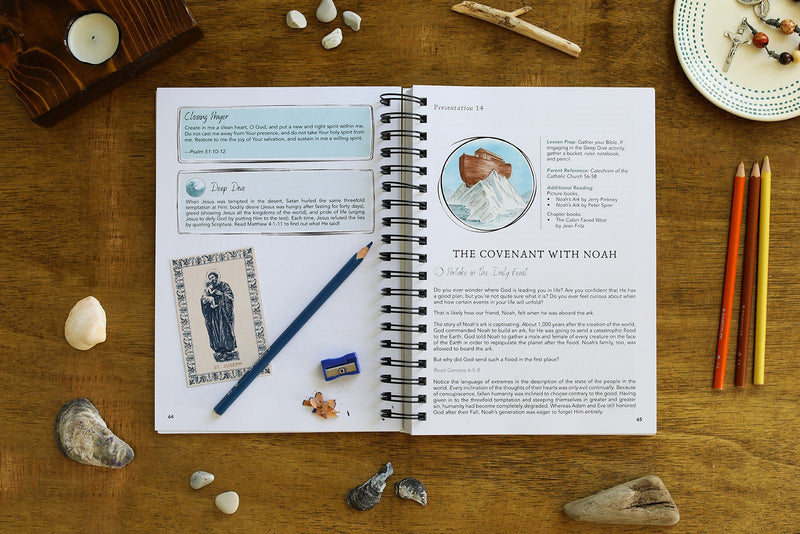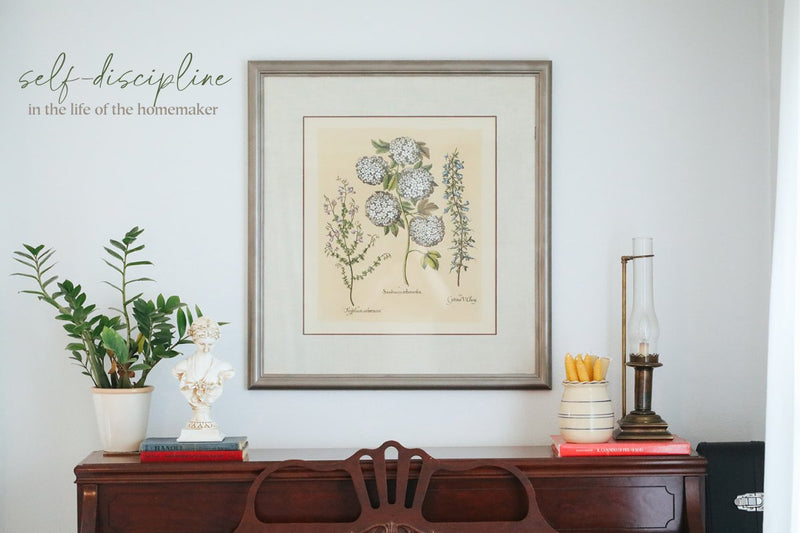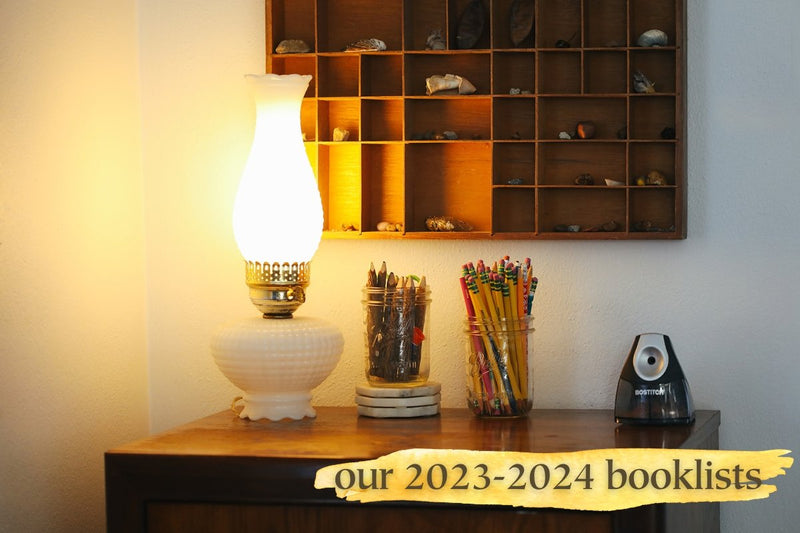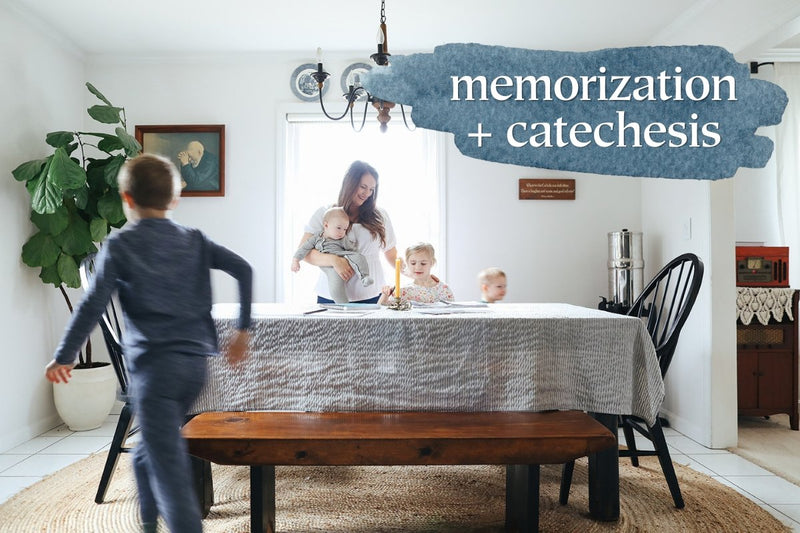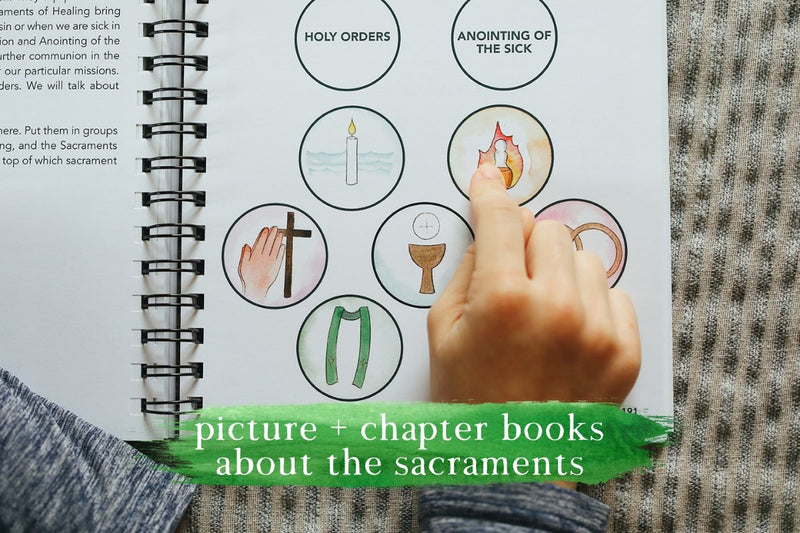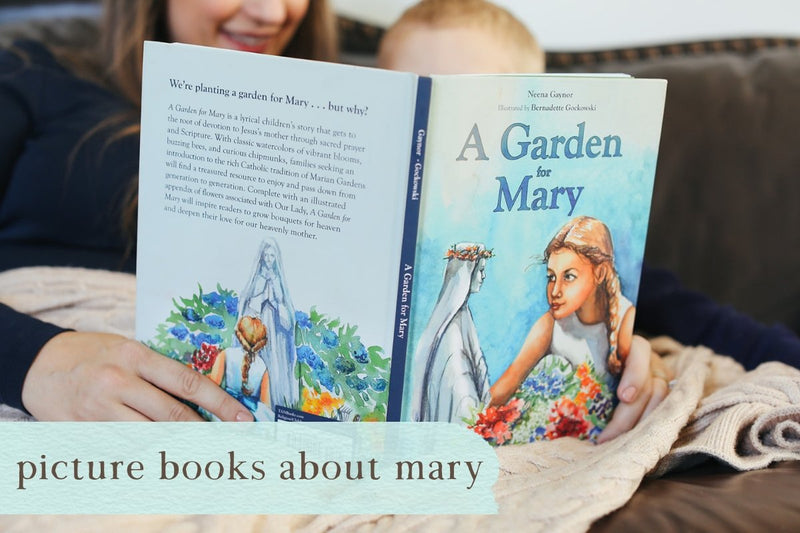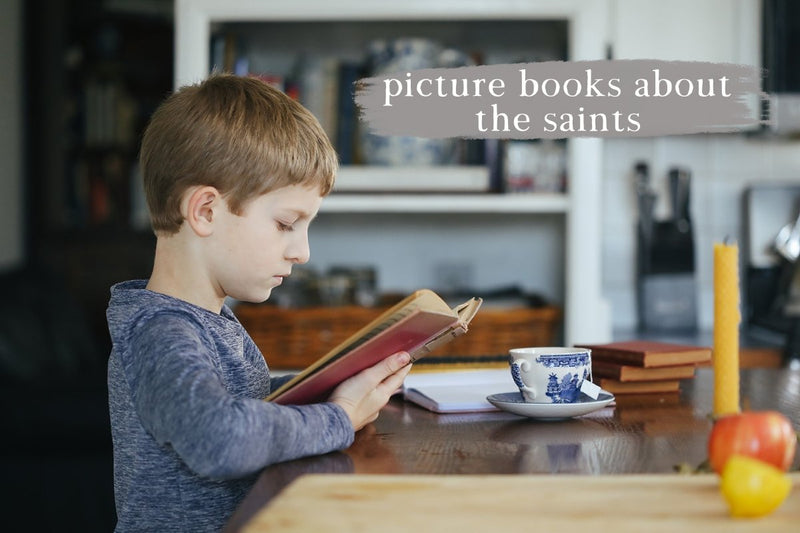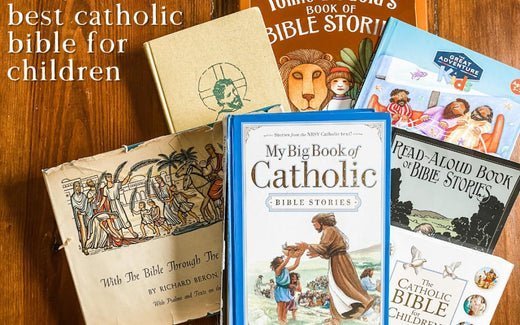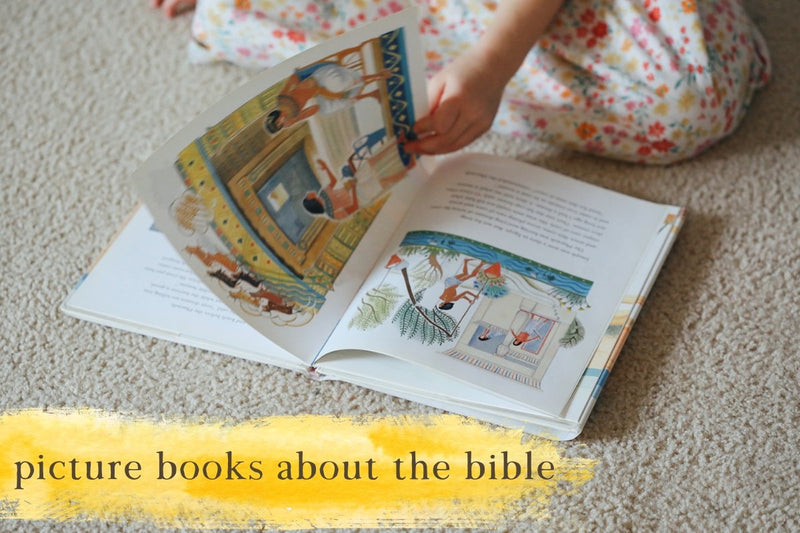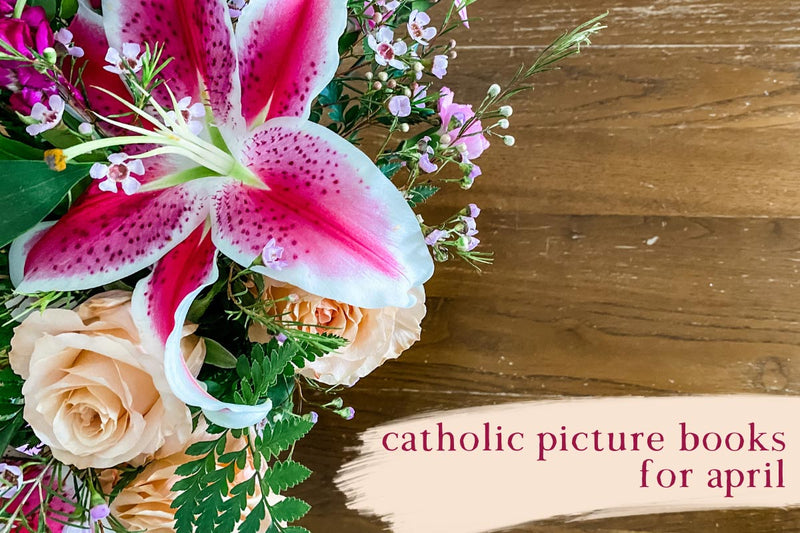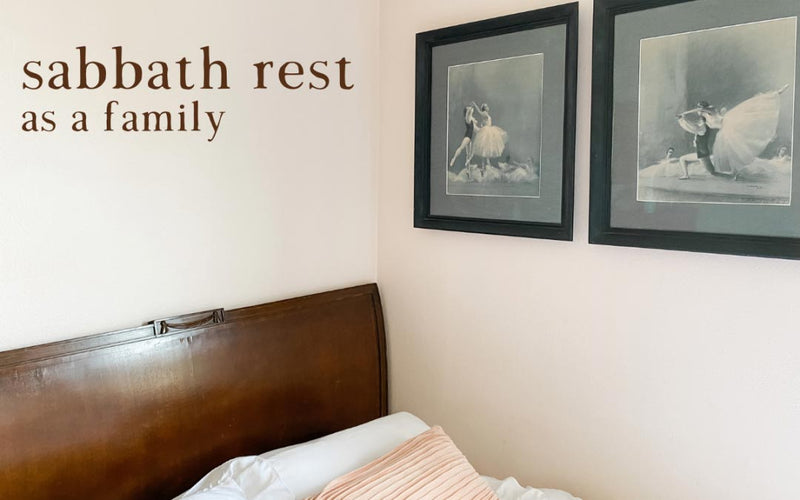Since the beginning of time, art has been employed by all cultures as a means to express themselves. In the history of the Catholic Church, art has always been a contributing factor in catechetical formation. Sacred art expresses some Truth about the Faith in picture form. The Nativity scene, for example, can be described verbally, but when it is captured in a beautiful picture, frozen in one moment for all time, it has a profound impact on the human mind and heart.
The Importance of Sacred Art in Catechesis
Sacred art in the Catholic Church serves immense purpose both in history and in the present. You don't have to be an art historian or expert how to sacred art study into your life and the lives of your children, either!
The greater the clarity with which art mirrors the infinite, the divine, the greater will be its possibility for success in striving toward its ideal and true, artistic accomplishment. (The Function of Art)
The History of Sacred Art
Sacred art is employed and noted throughout the Old Testament. We read the story of the Ark of the Covenant, a sacred work of art that housed the Ten Commandments within its golden walls. We read about the building of the temple. Think of how much time and care went into the building! People used their hands to build it, what now seems almost an impossible feat. Art was, and always will be, something we put together with our own hands. God gives us the means to express our love and gratitude to Him in the form of human creation. Something so simple and yet so wonderful!
Through his “artistic creativity” man appears more than ever “in the image of God”, and he accomplishes this task above all in shaping the wondrous “material” of his own humanity and then exercising creative dominion over the universe which surrounds him. With loving regard, the divine Artist passes on to the human artist a spark of his own surpassing wisdom, calling him to share in his creative power. (Letter to Artists)
The Catacombs and Sacred Art
The Catacombs are a wonderful example of sacred art and perhaps the earliest Christian-specific example we have of the Faith being preserved and taught through art.
Most of the carvings were created during the persecution of the early Christians. The catacombs depict the deaths of the martyrs buried within the catacombs.They also illustrate many stories in picture form from the Old and New Testaments, such as Daniel in the Lion's Den, Noah’s Ark, the Wedding at Cana and Lazarus being raised from the dead.
What we find in the catacombs, then, is not only art, but history. The history of our Church, from Old to New Covenant, is recorded in stone by our ancestors. Even after the persecution of the Christians was over, the Christians continued to make art in praise of our Lord.
When the Edict of Constantine allowed Christians to declare themselves in full freedom, art became a privileged means for the expression of faith. (Letter to Artists)
The Purpose of Sacred Art
Throughout the history of Catholicism, many periods held much illiteracy. Scholars were the only people taught to read and write. How, then, was the Gospel supposed to reach all peoples? Though preaching and art. People left messages or recorded things through pictures they presented to each other. Art not only holds cultural value, but it was a genuine method of communication when most people couldn’t write their own name. Many artists used their talents to communicate a Truth about the Faith that was accessible to everyone despite economic or educational status.
Society needs artists, just as it needs scientists, technicians, workers, professional people, witnesses of the faith, teachers, fathers and mothers, who ensure the growth of the person and the development of the community by means of that supreme art form which is “the art of education”. Within the vast cultural panorama of each nation, artists have their unique place. Obedient to their inspiration in creating works both worthwhile and beautiful, they not only enrich the cultural heritage of each nation and of all humanity, but they also render an exceptional social service in favor of the common good. (Letter to Artists)
[wpforms id="3063"]
How to Begin Incorporating Sacred Art into Your Catechesis
Now, even though more and more people are literate, art still holds incredible value. Art is now found in churches and museums, encased in glass or hung on a wall for us to view. We still use it to teach in schools and at home.
We use art in Bible study that illustrates the Old and New Testament stories. Sacred art study remains a magnificent way to teach the Faith—indeed, a vital way.
When it comes to the rosary, for example, using sacred art that matches up with each decade of the rosary provides a visual learning experience.
How do we begin to incorporate this into our lives and the lives of our children? Start simply (and profoundly).
- Churches and cathedrals are a great place to find sacred art. Visit your local churches and look for any sacred art such as paintings, statues, stained glass windows, etc. Most basilicas and cathedrals offer tours that show and explain the sacred art displayed there, too.
- Hang some favorite sacred art throughout your house.
- Have the kiddos grab some paper and paint and have them paint a copy of a sacred art piece.
- Sacred art picture study anyone? Sit down with your family and simply look over a painting, paying close attention to detail. Play a sort of "Eye Spy" and your kids will love it!
Sacred Art Picture Study
Let's dive deeper into the final point above. Studying artists such as Fra Angelico, Caravaggio, and El Greco is a good place to start with sacred art picture study.
Another great way to incorporate sacred art picture study into your catechesis at home is to find art that matches up with Bible stories you might be reading, such as the Exodus, the Flight Into Egypt, the Resurrection, etc. (We offer a sacred art study on the Joyful Mysteries—you can find it here!)
Art is something that will slowly be forgotten if we do not instill the importance of it into our future generations.
Beloved children, crown your artistic ideals with those of religion, which revitalize and integrate them. The artist is of himself a privileged person among men, but the Christian artist is, in a certain sense, a chosen one, because it is proper to those chosen to contemplate, to enjoy and to express God’s perfections. (The Function of Art)
What is your favorite piece of sacred art? Do you have a favorite artist who captures the Faith in a way that draws your heart to the Creator?






